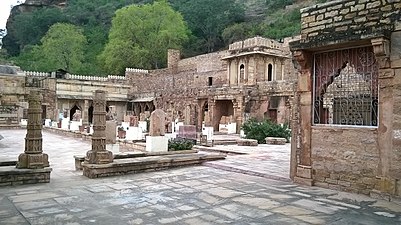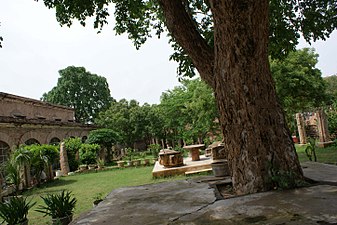Gujari Mahal Archaeological Museum
The Gujari Mahal Archeological Museum or State Archaeological Museum, sometimes called the "Gwalior Fort Museum", is a state museum in Gwalior, located in the fortress of Gujari Mahal.[1] It displays numerous artifacts of the region, including a fragment of the Garuda capital of the Heliodorus pillar from Vidisha.[2]
The palace of Gujari Mahal was built by Tomar ruler [[Man Singh Tomar] The palace has been converted into an archaeological museum. Rare artifacts at the museum include Hindu and Jain sculptures dated to the 1st and 2nd centuries BCE, miniature statue of Salabhanjika, terracotta items and replicas of frescoes seen in the Bagh Caves.
| Artifacts at the Gujari Mahal Archaeological Museum |
References[edit]
- ↑ Official website for tourism in the Madhya-Pradesh region
- ↑ Buddhist Landscapes in Central India: Sanchi Hill and Archaeologies of Religious and Social Change, C. Third Century BC to Fifth Century AD, Julia Shaw, Left Coast Press, 2013, p.89
Coordinates: 26°14′02″N 78°10′12″E / 26.234°N 78.170°E





